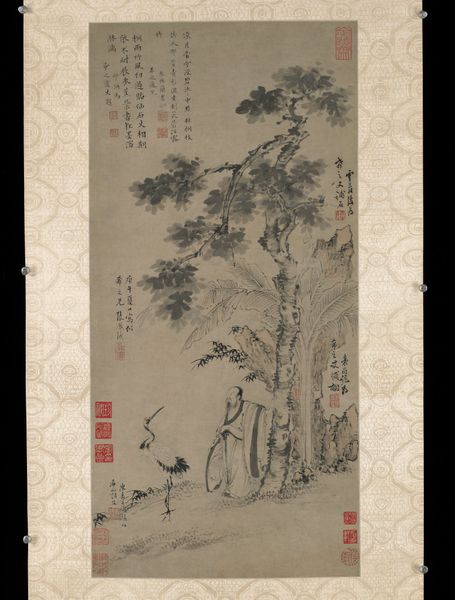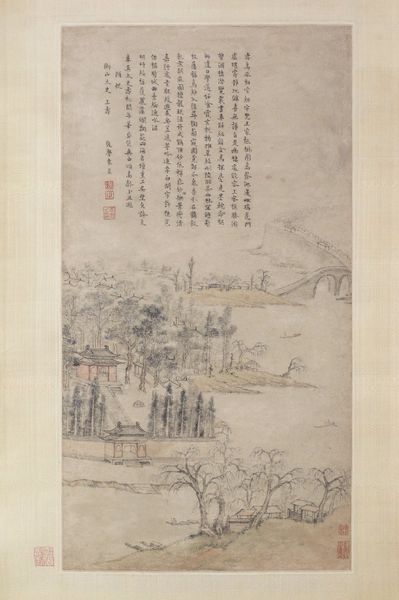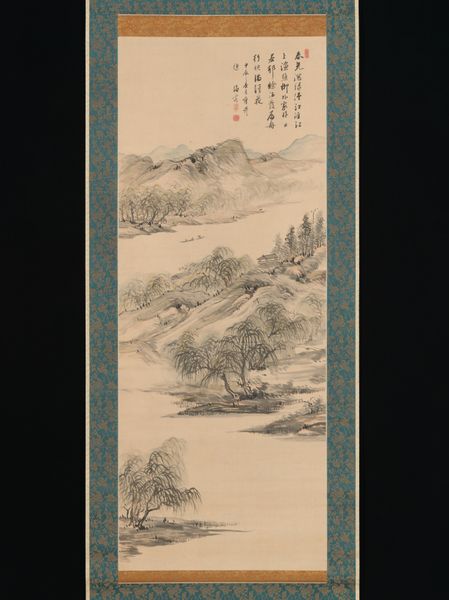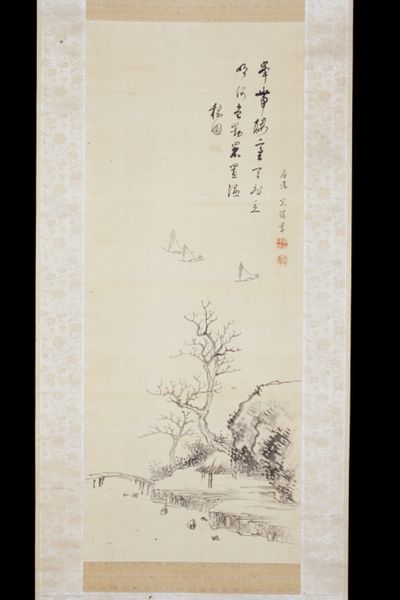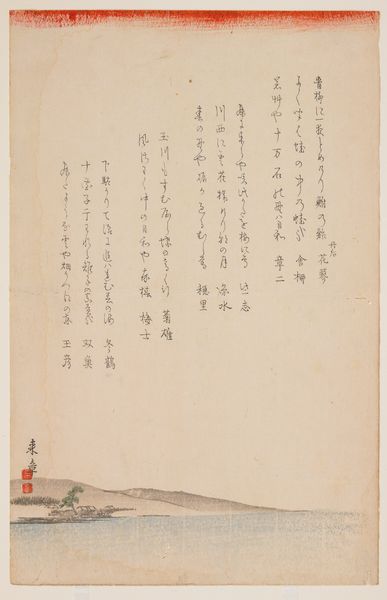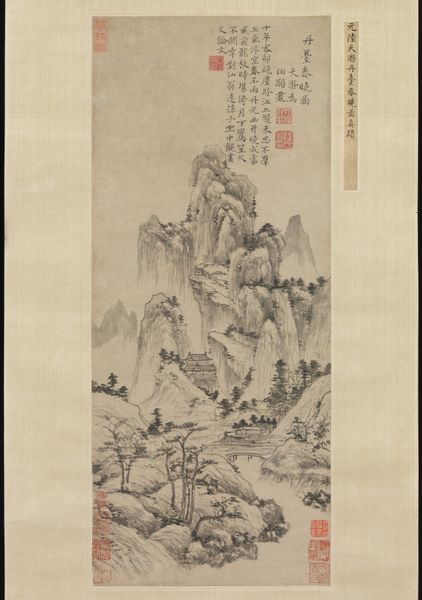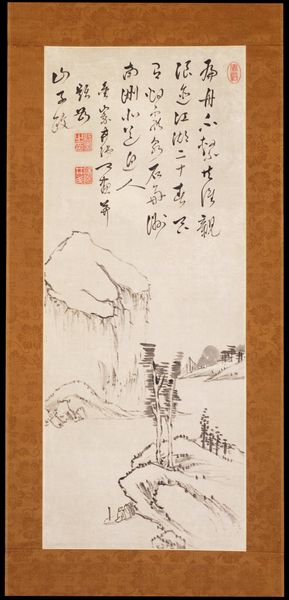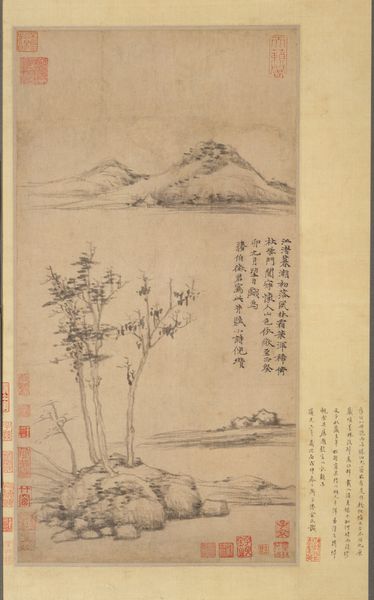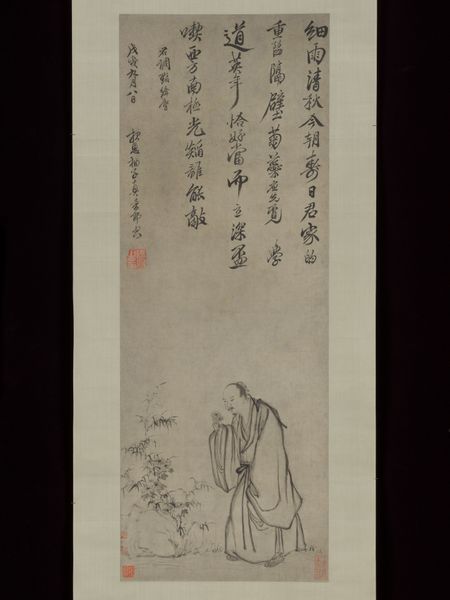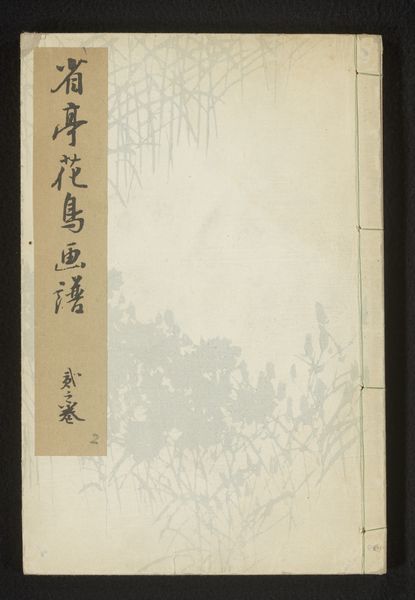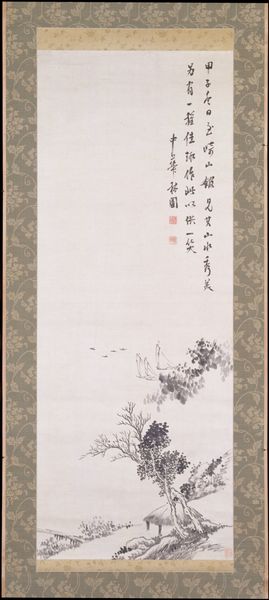
drawing, paper, ink
#
drawing
#
asian-art
#
landscape
#
paper
#
ink
#
calligraphy
Dimensions: height 112.5 cm, width 48.2 cm, height 183.4 cm, width 62 cm
Copyright: Rijks Museum: Open Domain
Curator: Welcome. Today, we're examining “Landschap,” a landscape drawing attributed to Luo Mu, created sometime between 1650 and 1700. It’s ink on paper. Editor: The sheer verticality of it is striking, isn’t it? And that wash of pale ink, combined with the crisp lines…it gives off an air of peaceful contemplation, almost monastic. Curator: Indeed. Observe the masterful use of space; the top is dominated by the calligraphy, with the landscape elements below carefully balanced. The ink work demonstrates control and subtlety of modulation, achieving the intended depth of perspective. It’s as much about absence as presence. Editor: Precisely. And I'm particularly interested in the materials used. This isn’t simply ink—what specific binding agents did Luo Mu have access to? Where was this particular grade of paper sourced? Knowing the conditions in which this work was made adds depth to our experience. Consider, for instance, that ink-making itself was a highly skilled craft. Curator: Good point. The calligraphic inscription and its relation to the overall composition is essential here. While the script obviously provides textual context, it’s also critical visually. The careful ordering creates a sort of architecture to complement the mountains. Editor: Absolutely. The arrangement feels intrinsically connected to labour and the means of disseminating both text and image through craftsmanship. These methods, from the grinding of pigments to the rhythmic movement of writing the characters, influence the work's reception, imbuing each copy with both tradition and meaning. Curator: Its cultural references run deep. Note how the brushstrokes depict rocks and trees through conventions honed over centuries, evoking an aesthetic ideal cultivated by the literati class. Editor: Right. Seeing art as just an isolated aesthetic is a flaw. A work like this serves to represent the socio-economic reality, its value shaped by the networks and systems through which it has survived until now. Curator: Looking at Luo Mu’s artistic strategies provides insight into historical, intellectual, and compositional dimensions. Editor: Examining it from a materials perspective adds yet another critical layer to its meaning and legacy.
Comments
No comments
Be the first to comment and join the conversation on the ultimate creative platform.
